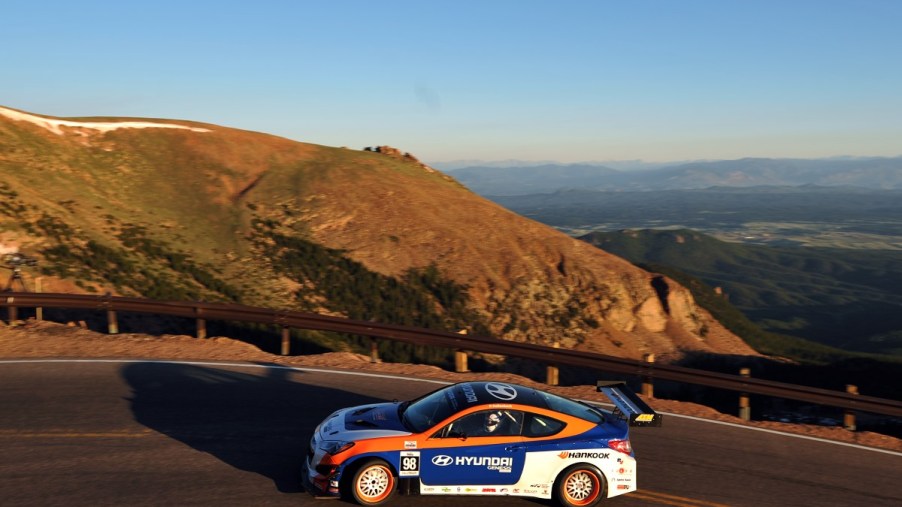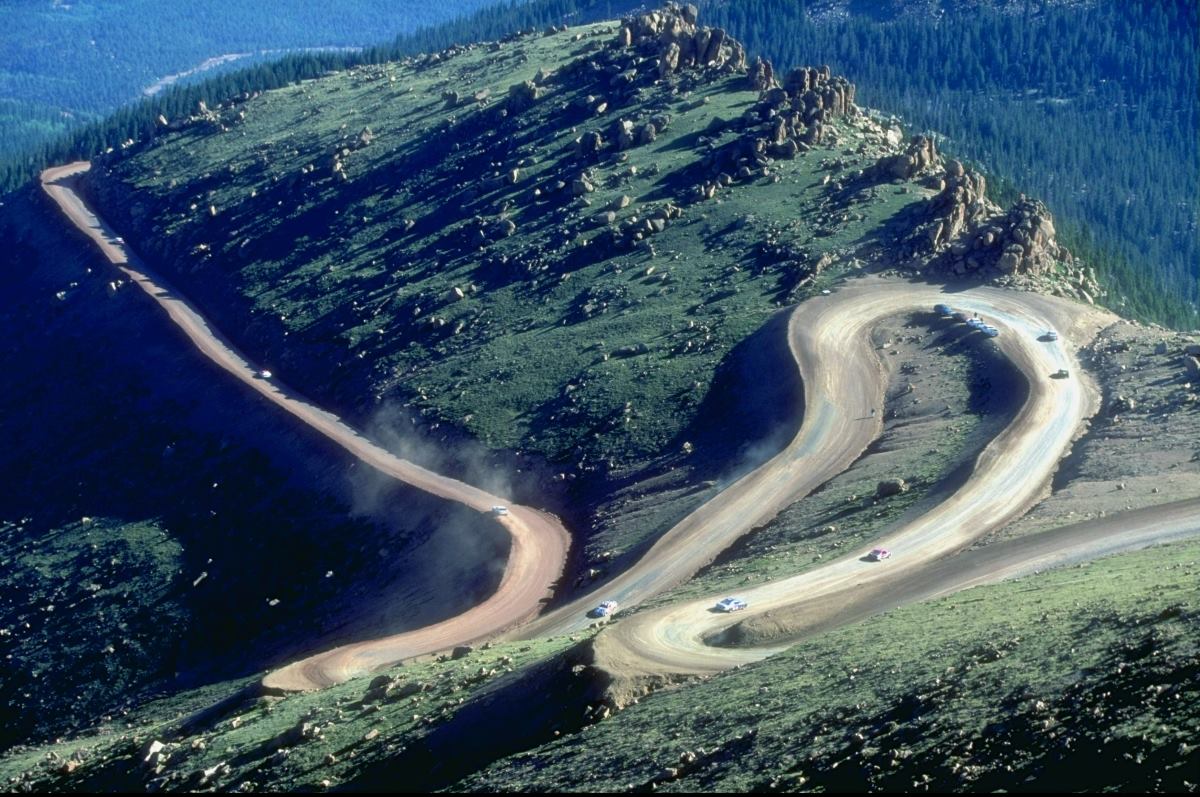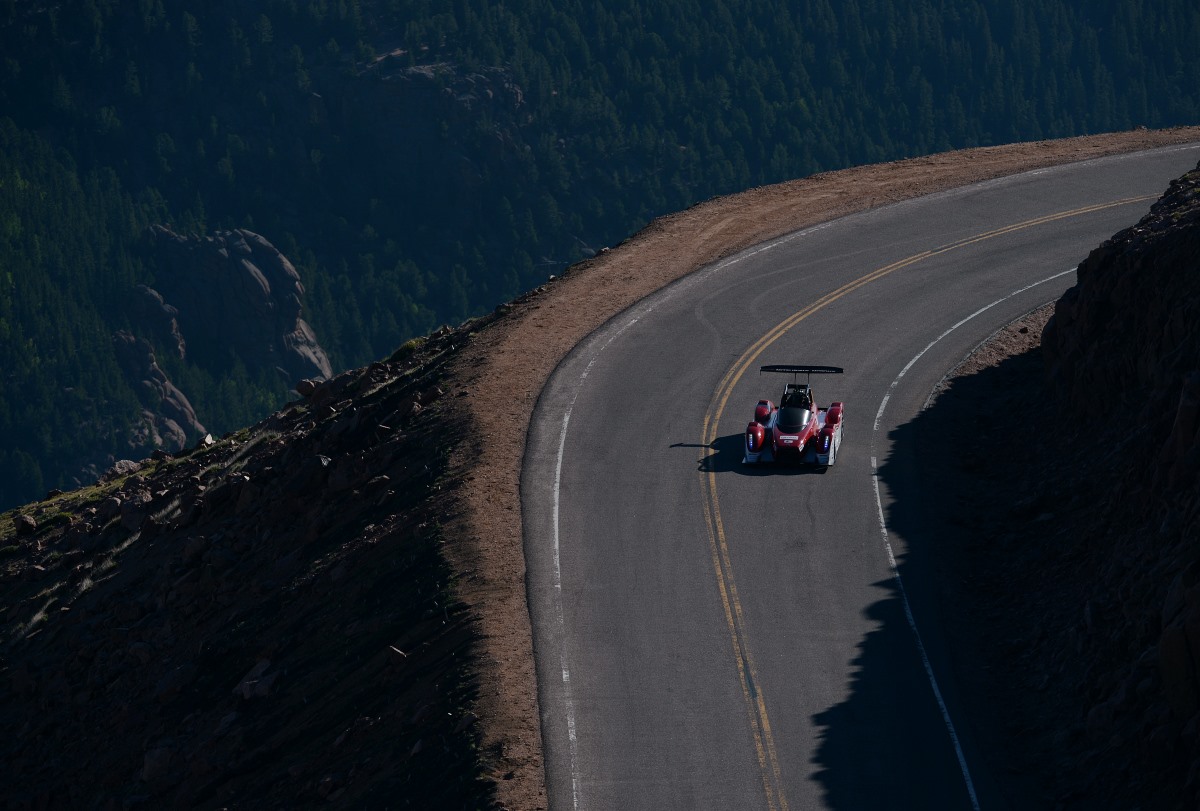
The Pikes Peak Hill Climb Is More Than Just Another Race
As races go, the Pikes Peak Hill Climb may seem a bit unusual. Rather than a car-to-car race to the finish, the challenge of Pikes Peak is simply about the course itself. Also known as “The Race to the Clouds,” this annual event challenges both drivers and their cars as they try to ascend this twisting, 12.42-mile mountain course.
The challenge of “The Race to the Clouds”

The renowned Pikes Peak Hill Climb is one of the most iconic and challenging hill climb races in the world, attracting racers from a range of disciplines. The event starts near the Crystal Creek Reservoir, racing up the Pikes Peak toll road to the summit.
Over those 12.42 miles, drivers have to navigate 156 challenging corners, including 19 hairpin turns. Several of these 180-degree bends carry high stakes. Miss the braking marker, and drivers can find themselves hurtling off of the mountain entirely. By the top of the course, competitors reach over 14,100 feet in altitude, which presents a host of challenges beyond simply driving.
As they race toward the summit, the thinning atmosphere offers several points of contention. For drivers, the lack of air makes breathing difficult. The physical challenge of driving at the limit is hard enough. The reduction of breathable air multiplies the effects of physical exertion by an order of magnitude.
Beyond that, there are vehicular challenges that come as a result of the high elevation. Thinner air means that naturally-aspirated engines have to work harder to make power. According to turbo manufacturer Garrett, a naturally-aspirated engine loses 3% of its power forever 1,000 feet. The hill climb’s 10,000-foot starting point and 14,000-foot finish line mean that turbocharging is a requirement to post a fast time.

There are also issues with downforce and grip at such high elevations. In short, thinner air diminishes the effect of downforce. As such, cars have less grip and become harder to drive. Top-level Pikes Peak vehicles will often have massive splitters, canards, and wings to help create enough downward pressure for optimum handling.
Then there is the asphalt itself. Pikes Peak started as an entirely gravel course, first used in 1916. But in 2002 the city of Colorado Springs decided to pave the popular tourist road. The project took 10 years overall, finally completed in 2012.
Now though, that pavement is starting to show its age. Frost heaves from Colorado winters have made the challenge of Pikes Peak greater than simply the altitude and the curves. In 2019, legendary motorcyclist Carlin Dunne died after losing control of his bike just 20 yards from the finish line.
Can anyone drive the Pikes Peak Hill Climb?

When it isn’t roped off for racing once a year, the Pikes Peak Hill Climb is just another public road. The toll road is a tourist destination for non-auto enthusiasts as they ascend to the peak and take in a stunning view of the Rockies.
Anyone willing to shell out $5 per occupant can access the toll road. In addition, the mountain requires a reserved permit for anyone seeking a drive to the summit itself, at a cost of $2 per vehicle.
Getting into the race is a bigger challenge. Sure, anyone can apply to run the race. But selection is limited to just a few dozen competitors. Typically capped at 85, this year’s running saw just 66 timed runs up the mountain, plus an untimed exhibition by Lia Block in her late father’s 1,500-horsepower Porsche 911.
The Pikes Peak Hill Climb is a must-see event for auto enthusiasts

The Pikes Peak Hill Climb isn’t just a race. It’s a test of both driver and machine that pushes both to their limits. It combines breathtaking scenery with intense competition, capturing the attention of motorsport enthusiasts worldwide. The event’s storied history, demanding course, and extraordinary elevation make it a true spectacle that continues to captivate racers and spectators alike.




